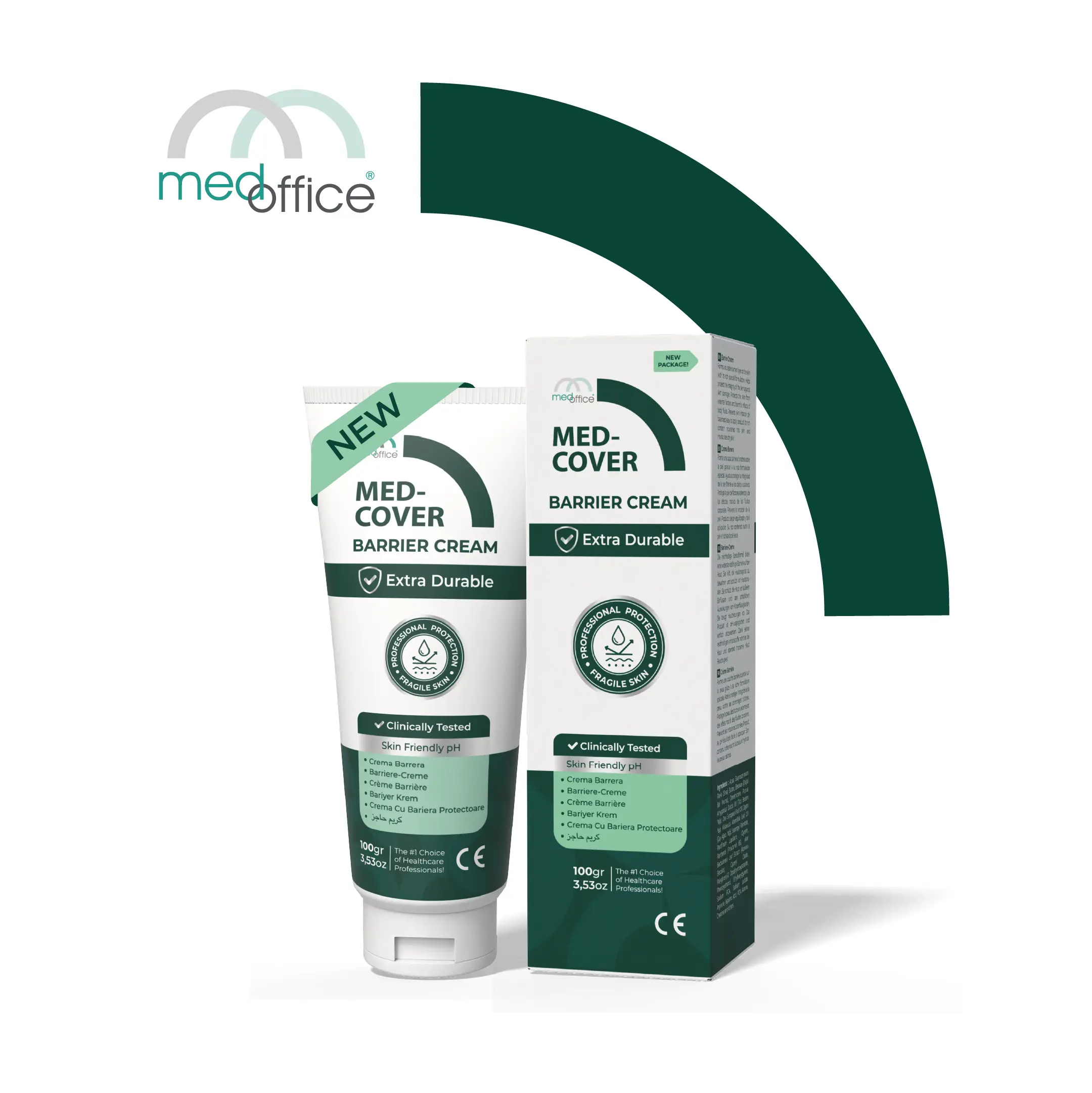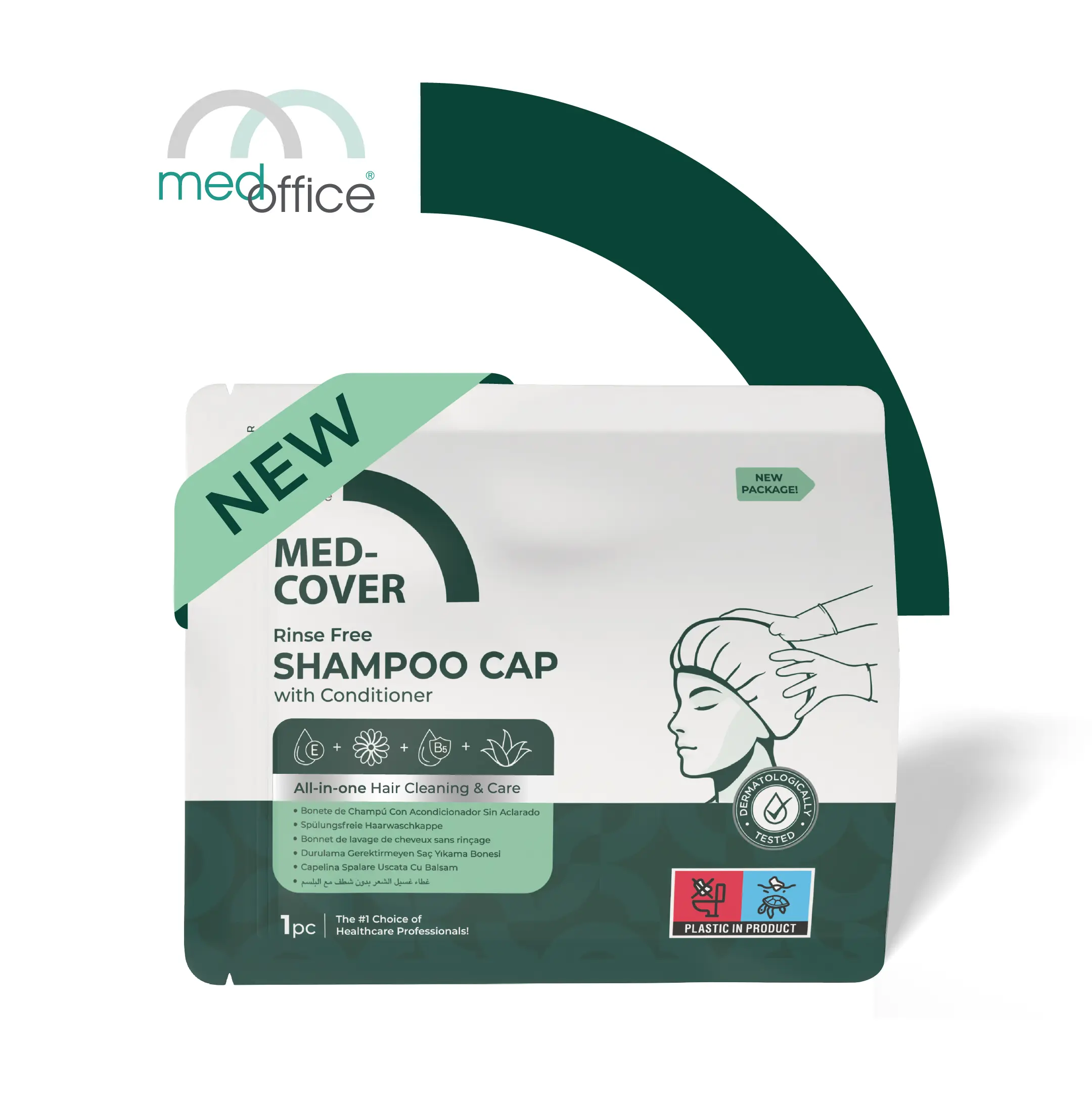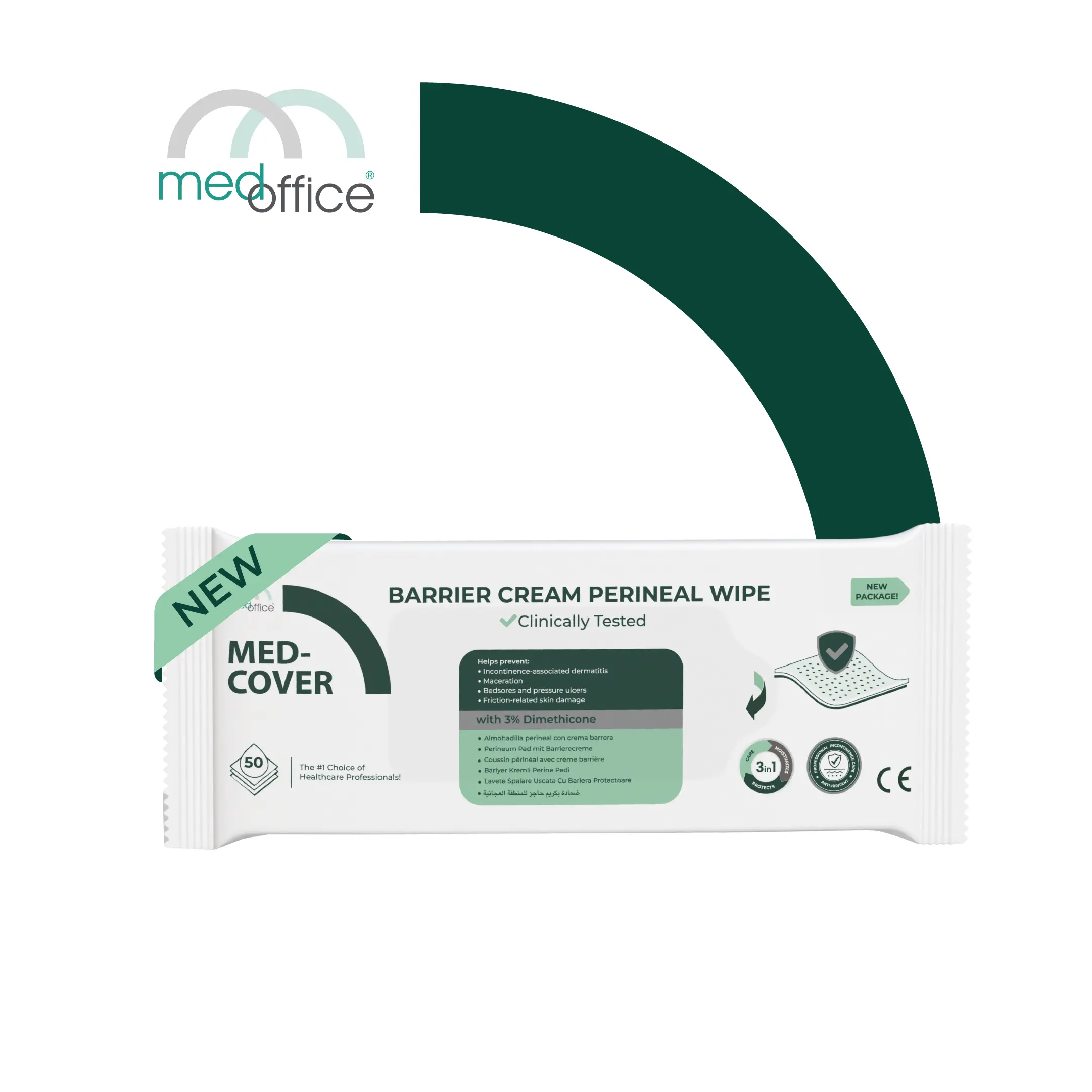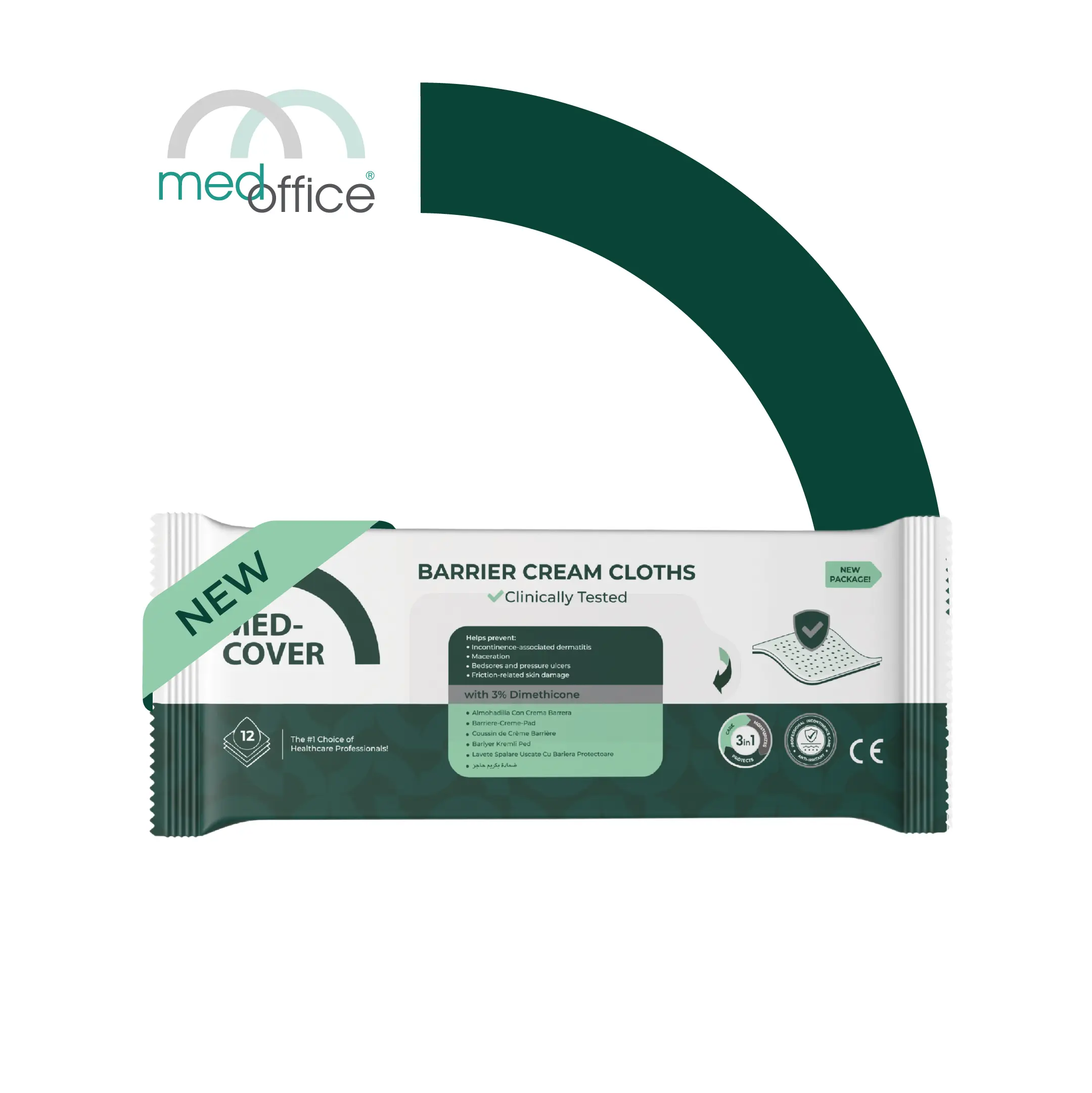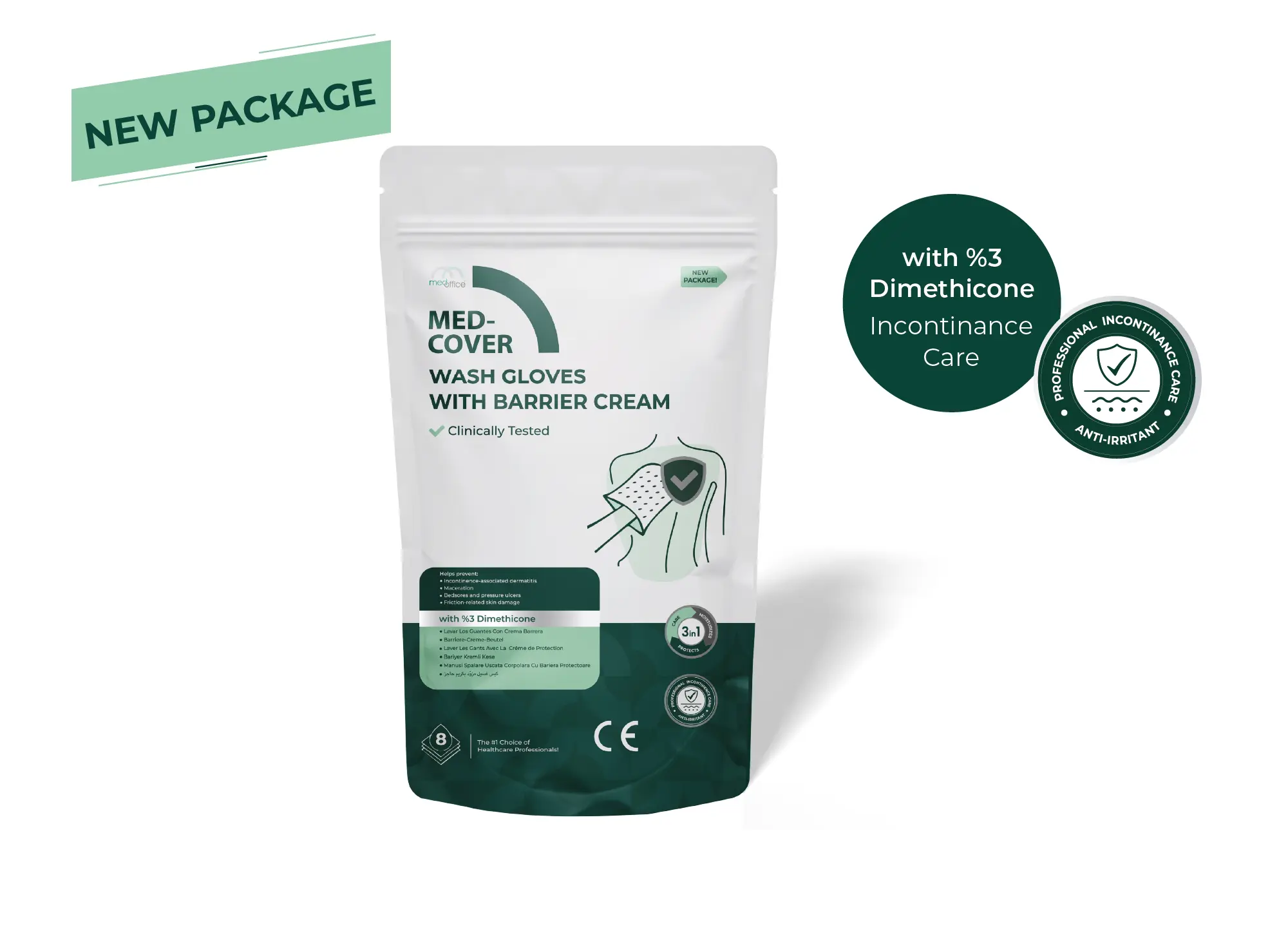

MED-COVER Wash Gloves with Barrier Cream
Med-Cover Barrier Cream Pouch provides comfortable and safe care for bedridden and intensive care patients.
Incontinence Care with 3% Dimethicone
-
3-in-1 — Care - Protection - Moisture Support
-
Helps prevent incontinence-associated dermatitis (IAD), maceration, the risk of pressure sores, and friction-related skin damage (Helps prevent)
-
No rinsing required; single-use only
-
Its wearable glove design allows for easy, two-way use.
-
The barrier layer it creates prevents urine and stool from coming into contact with the skin.
Product Content
Ingredients
Information is being updated.
Usage Areas
• Incontinence areas and areas at risk of maceration
• Pressure points and intact skin exposed to friction
• No-rinse hygiene + barrier support for bedridden/intensive care patients
Usage Instructions
• Open the packaging and gently wipe the area. No rinsing.
• For single use only; use a separate pouch for each area.
• On intact skin only; avoid eyes and mucous membranes.
• Heating (optional): Follow instructions; avoid overheating and monitor skin temperature.
FAQ
1. What does the Barrier Cream Pouch do?
It forms a transparent, breathable barrier film on the skin with 3% dimethicone, helping to protect against irritants and friction.
2. Which areas is it used for?
Incontinence areas, pressure points, and intact skin exposed to friction (perineum, buttocks, coccyx, etc.).
3. How to apply?
Open the packaging and gently wipe the area; no rinsing is required. For single use only; use a separate pouch for each area. When and how often should it be replaced? After cleaning and after each contamination/contact; several times a day, depending on the clinical situation.
4. When and how often should it be replaced?
After cleaning and after each contamination/contact; several times a day, depending on the clinical situation.
5. How does it fit dressings, plasters, and ostomy bags?
It generally doesn't affect the adhesion of medical adhesives after drying; leave a thin layer on the tape area.
6. Which skin types is it suitable for?
Suitable for sensitive and at-risk intact skin; for newborns or special circumstances, seek clinician advice.
7. Is it suitable for use on open wounds?
Do not apply intra-wound; use only on intact skin, avoiding the eyes/mucosa.
8. What are the ingredients and safety features?
Moisturizing with 3%, vitamin E, and panthenol; alcohol-free. Store at room temperature; if irritation persists, discontinue use and consult a healthcare professional.
Technical Specifications
Features
• Nonwoven: 85 GSM, white honeycomb (30% viscose / 70% PES)
• Finish size: 15 × 22 cm
• Packaging: Zip-lock packaging 60 PE + 12 PET
Packaging Information (two variants)
Variant A – 8 units/pack
• Ref: MCK008
• GTIN-13: 8681020477915
Variant B – 10 units/pack
• Ref: MCK0010
• GTIN-13: 8681020477953
Popular Products
Other Popular Products


